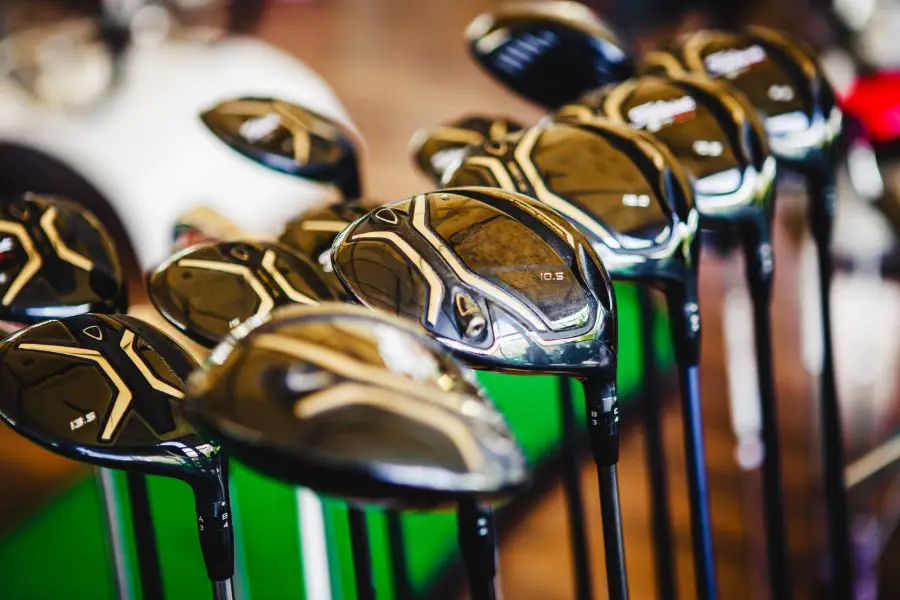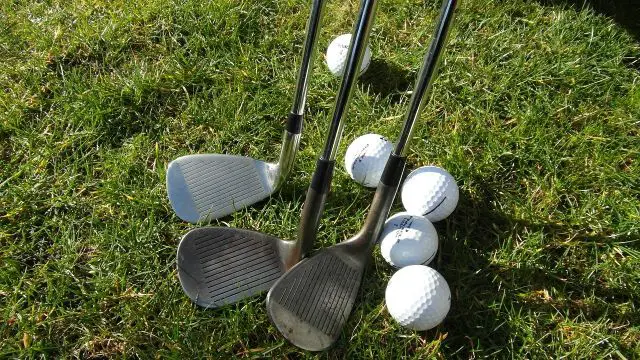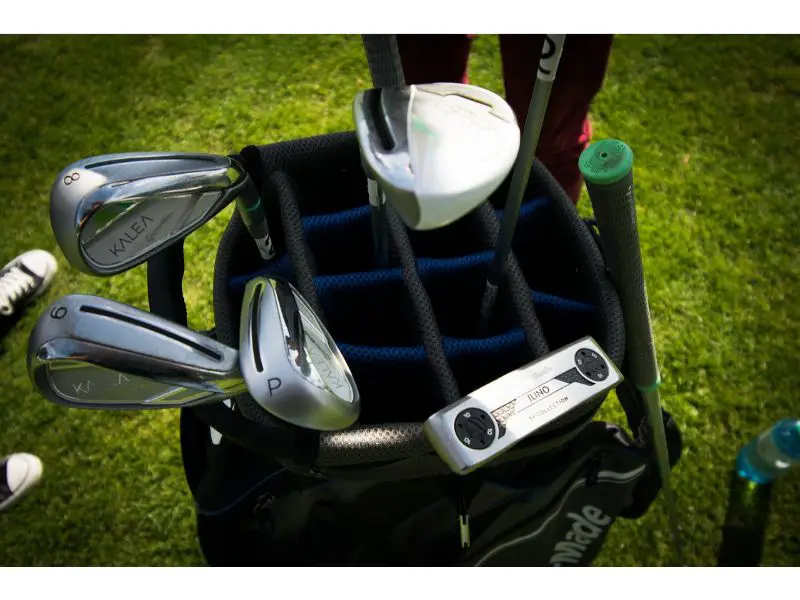A lot can change in 20 years. Anyone who can remember back two decades knows how much things can change over time. In terms of golf, the basic fundamentals of the game remain the same. However, a lot has changed in golf over the past 20 years.
There have been many advancements in materials, there are new strategies to playing, and there is more equipment than ever before! All these changes have lead to more and more people becoming interested in the challenging, yet wonderful game of golf.
The real question here is if golf club have changed over the past 20 years. And if they have, how have they improved? Check out the article below for all you need to know about what has changed in golf clubs and how it will impact your game.

How Much Have Golf Clubs Improved In 20 Years?
If you put a set of 20-year-old golf clubs that are in good condition next to a new set, the first thing you would notice is that they look different. Aesthetically, things have changed. Clubs today all seem to have a sleek and appealing design. Some even go as far as boosting unique designs and colors.
Nowadays, there are matte black wedges, drivers with pink or blue heads, and a variety of newly shaped putter heads, most of which feature thicker grips. So yes, there are differences, but aesthetic improvements do not improve the performance of a club.
Perhaps the question is this; do golf clubs perform better than they did 20 years go? The simple answer is yes. Across the board, golf clubs do perform better, though there’s more to it than simply picking up a new club and becoming a better player.
Today’s golf clubs can help players hit the ball further than those available 20 years ago. New designs and technology can also help players to achieve more spin and control.
Improvement Impact For Scratch Golfers
However, results still largely depend on the player. Let’s look at irons here. For an exceptional golfer who makes few poor connections, one who hits the ball how they want, when they want, the differences between older irons and newer irons aren’t all that dramatic.
Yes, they will hit the ball a little bit further, achieving greater shot height and spin. However, these differences are much more sublet in scratch players. Playing at the highest level requires personal skill and mental fortitude over the latest and greatest equipment.

Improvement Impact For Amateur Golfers
On the other hand, let’s take a look at the average amateur golfer. The amateur golfer makes mistakes, they slice, they hook, they make poor connections. And it’s on these shots where the difference perhaps comes most into play most.
Older clubs are far less forgiving, while newer clubs offer a lot more leeway. Players can miss the sweet spot and still hit reasonable shots, which was harder to do 20 years ago.
Larger sweet spots are now common, as is greater forgiveness, which leads into another big change. That change is more choice. Players now have a plethora of options. If they want more forgiving clubs, they can buy more forgiving clubs. This wasn’t really the case at the start of the 21st century.
What Clubs Have Improved The Most In 20 Years?
The driver is the club that has changed the most over the last two decades. Look at a driver made and released in 2002 and place next to a driver from 2022 and the vast differences will be easy to spot.
The club heads are much larger for a start, while driver shafts are almost entirely made from graphite. The clubs on today’s drivers look much more stylish with an incredibly cleaner finish. And that’s just the design.
Performance wise, the new drivers beat the old drivers by a reasonable amount, at least in terms of distance and ball speeds anyway. Testing has shown that a new driver today can allow players to achieve ball speed increases of 10mph to 15mph.
In terms of carry, you’re probably looking at an extra 30 yards, not to mention an extra 30 in terms of total distance. Those are quite significant improvements.

What Has Improved In More Modern Clubs?
When it comes to irons there are three major differences between those clubs typically used 20 years ago and the new models today. These differences are height, carry and total distance. It’s easier to hit the ball higher with today’s clubs, while the ball also travels further, carrying around 20 yards further, travelling an extra 25, sometimes 30 yards in terms of total distance.
As mentioned above, driver changes in terms of carry and total distance have been similar. Players can also achieve greater height from one of today’s drivers than they would with one from 20 years ago.
Would Upgrading my 20-Year-Old Clubs Improve My Game?
As touched on above, it probably depends on your ability. If you’re already a really good player and are consistently posting great scores with 20-year-old clubs, then new clubs won’t change too much. Sure, newer clubs will give you a bit more distance.
They’ll probably feel better too. Depending on just how foo you are, you might get more spin and control. All of which should knock a few shots off your score, but don’t expect to go from say a seven handicap to a scratch golfer overnight.
For higher handicaps, improvements may be greater, but again, we’re not talking about halving your handicap. The biggest thing the modern-day clubs can do for the casual player is give them greater forgiveness when they miss the sweet spot.
What could improve your game is having a set of golf clubs that are custom fitted to suit your swing. Custom fittings were far less prominent 20 years ago.
It’s likely that if you are sporting an early 00’s set, then they’re probably not quite right for you. A set of clubs that have been built to suit your specific needs, can absolutely aid improvements in your game.
When Should You Replace Your Clubs 20-Year-Old Clubs?
Just because your clubs are 20 years old, they don’t necessarily need replacing. However, in some cases, 20-year-old clubs could be holding you back.
For example, golf clubs, though not made of glass, are reasonably delicate, and sometimes, over time, they become damaged. Playing with damaged clubs will only hinder your performance, so perhaps it’s time to consider an upgrade.
Unless all they’ve been doing is gathering dust, all 20-year-old clubs will show some indication of wear and tear. But for some golf clubs, this general wearing may hinder performance.
An example would be the grooves on the face of an iron fading significantly, which could
Who Doesn’t Need To Replace 20 Year Old Clubs?
There are two questions to answer before replacing 20-year-old clubs. 1. What is your ability? 2. How often do you play?
If you’re a decent player who plays reasonably regularly, and you score pretty consistently, then brand new clubs shouldn’t be the be all and end all.
At the end of the day, it’s down to the individual, and sometimes, people just want new clubs, which is absolutely fine.
That said, if you’re someone who plays irregularly and you’re not really serious about improving or scoring well, then keep hacking away with those 20-year-old clubs.
Final Thoughts
Yes, golf clubs have gotten better over the past 20 years, there can be no denying it. They look different, they feel different and they perform differently.
The point to remember, though, is that it’s not all about equipment. The best or the newest equipment won’t make you the best golfer. There is no substitute for practice and learning the game.
Players, even those right at the bottom of the amateur scale, can benefit from new clubs, but if they’re not practising and looking to improve their overall game, then the improvements will be miniscule.
Overall, though, there are better clubs on offer than there were 20 years ago, both in terms of design and performance, while the increases in choice mean that really is something for everybody.
Hopefully you liked this article and found it informative. Check out our other blog posts if you liked this one!


